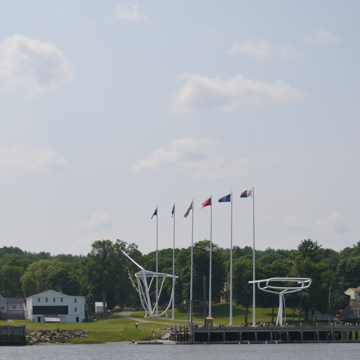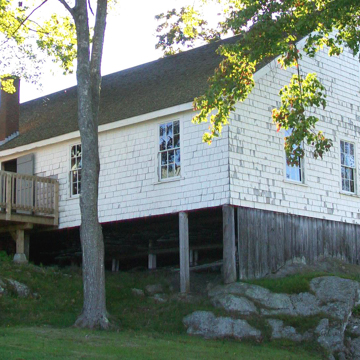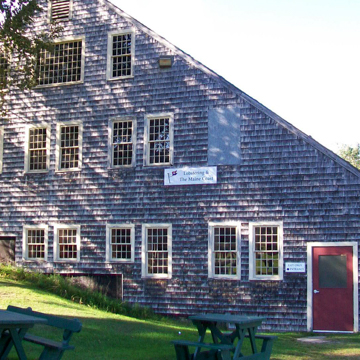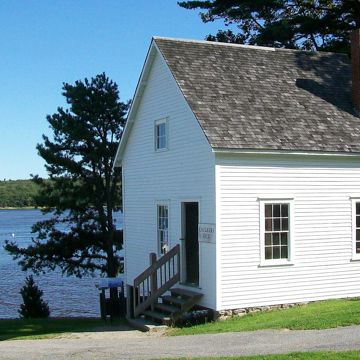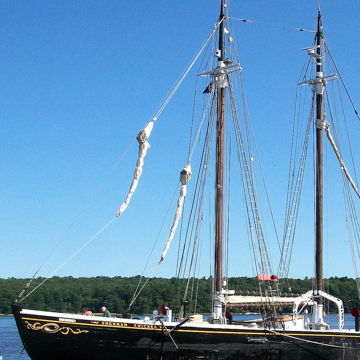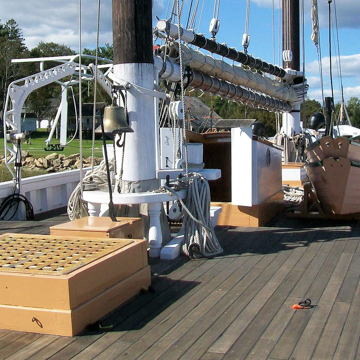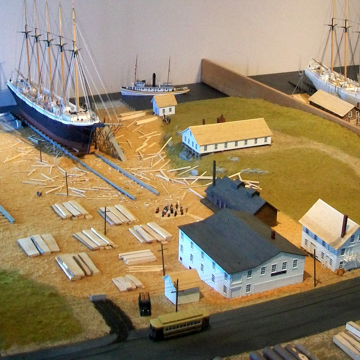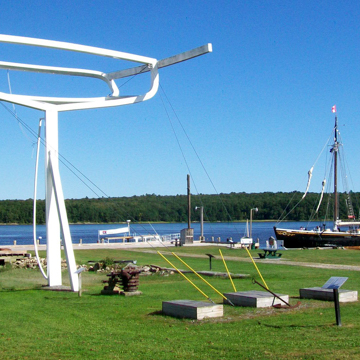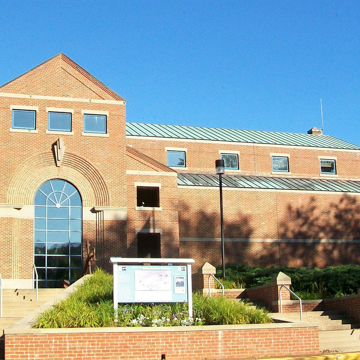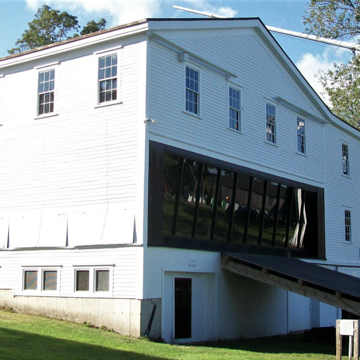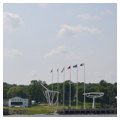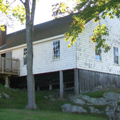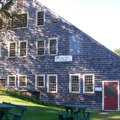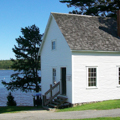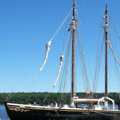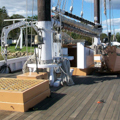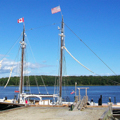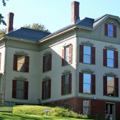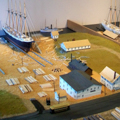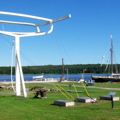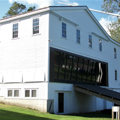Located in Bath, the restored Percy and Small Shipyard is the last vestige of what was the heart of Maine’s post–Civil War shipbuilding industry. From this site, the firm launched clipper ships, schooners, barks, and other large sailing vessels. In 1855 the City of Bath, whose first shipyard opened in 1762, ranked with Philadelphia, New York, Boston, and Baltimore for the amount of ship tonnage registered, enrolled, and licensed. While wooden shipbuilding declined in the post–Civil War era, the industry prospered in Bath until the 1920s.
The Percy and Small yard sits on the wide and deep Kennebec River less than a mile from the gigantic Bath Iron Works (BIW), a yard founded in 1884 when the Arthur Sewell and Company Shipyard began building iron and steel, rather than wooden, ships. Undaunted, Percy and Small opened their yard twelve years later, in 1896. They built large wooden sailing vessels, schooners—called “Down Easters”—to haul coal, the last practical purpose for these mammoth ships. A high bulk but low value cargo, coal had to be moved economically at first by three-mast, and finally by five- and six-masted schooners, most of which featured retractable centerboards to give them access to shoal waters and upriver ports—the destination for their cargoes of coal. Ships of this size required deeper water and steeper and longer ways for launching, and the Kennebec shoreline met both requirements.
The shipyard complex consists of five buildings all part of the original Percy and Small Shipyard. The largest is the saw mill building, which has a separate shop upstairs where the ship joiners worked. The skilled joiners made the ribbing using wooden treenails, which the shipwrights then fastened to the keel. At the paint shop artisans produced the treenails and mixed the paint. Caulkers worked at the “Oakum (or pitch) Shop.” One of the most important buildings was the “Mold Loft,” where the ship’s designers (or architects) drew the lines (or patterns) the joiners and shipwrights would frame. A transformer shop housed the electrical generator.
Bath was home to several other yards that also built these four-, five-, and six-masted leviathans, including Goss and Sawyer, Adams and Hitchcock, William Rogers, G.G. Deering, Kelly, Spear and Company, Nathaniel T. Palmer, and William T. Donnell. Together, these yards launched eleven six-mast schooners, seven by Percy and Small alone. The most magnificent of these, and the largest wooden sailing vessel to operate in the American commercial fleet, was the 3,732-ton, 328-foot Wyoming, which Percy and Small completed in 1909. For strength, the yard put hundreds of tons of metal into her standing rigging. The Wyoming, like so many of these ships in the coaling trade, met a tragic end, foundering in a 1924 storm off Cape Cod.
Percy and Small stopped building wooden schooners in 1920, and the shipyard property languished for many years after the firm ceased operation. In the 1960s the site was purchased by a summer resident from Philadelphia, Mrs. L.M.C. Smith, who gifted it to the Maine Maritime Museum. The museum restored the shipyard and opened it up to the public as part of its exhibits. The restored three-acre shipyard site is contiguous with the museum’s site on the Kennebec River.
Though Percy and Small went out of business nearly a century ago, Bath remained an important shipbuilding center. In 1890 Bath Iron Works (BIW) won a contract to build two gunboats for the U.S. Navy, and naval missile frigates continue to be built there today.
References
Snow, Ralph L, and Douglas K. Lee. A Shipyard in Maine: Percy and Small and the Great Schooners.Thomaston, Maine: Tilbury House, 2005.
Briggs, John, “Percy and Small Shipyard,” Sagadahoc County, Maine. National Register of Historic Places Inventory-Nomination Form, 1974. National Park Service, U.S. Department of Interior, Washington, D.C.














